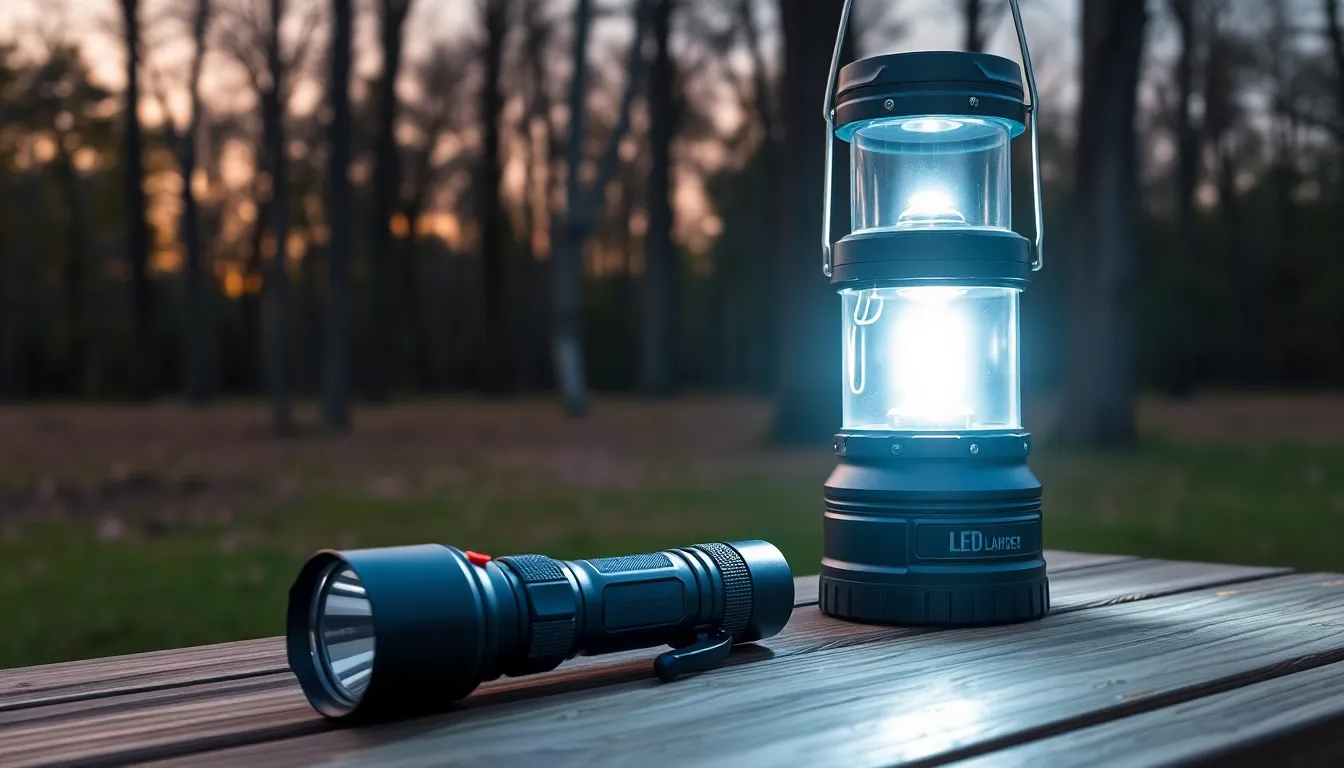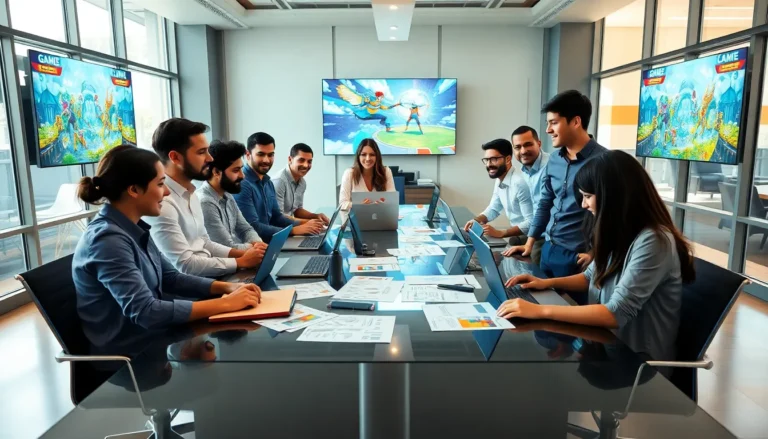Table of Contents
ToggleIn a world where convenience and mobility reign supreme, portable lighting has emerged as an essential tool for both everyday tasks and adventurous outings. From camping trips to emergency power outages, having reliable and versatile lighting options can make all the difference. These innovative solutions not only brighten spaces but also enhance safety and comfort in various situations.
With advancements in technology, portable lighting has evolved significantly. Options range from compact LED lanterns to rechargeable flashlights, catering to diverse needs and preferences. Whether it’s illuminating a backyard gathering or providing essential light during a hike, portable lighting offers flexibility and reliability. Discover how these handy devices can transform your experiences and ensure you’re never left in the dark.
Overview of Portable Lighting
Portable lighting includes various devices designed for mobility and ease of use in diverse environments. These devices accommodate activities like camping, hiking, and emergency preparedness, offering convenience and safety.
Types of Portable Lighting
- Flashlights
Flashlights provide direct, focused light. They come in various sizes, brightness levels, and power sources, including batteries and rechargeable options.
- Lanterns
Lanterns distribute light evenly in all directions. They are ideal for group settings, often featuring handles for easy transport and are available in LED and propane models.
- Headlamps
Headlamps offer hands-free lighting. These devices attach to the head and are useful for tasks requiring both light and mobility, such as trail navigation or repairs.
- String Lights
String lights create a warm ambiance and are suitable for outdoor gatherings or camping. Many models are solar-powered or battery-operated for convenience.
- Solar-Powered Lights
Solar-powered lights utilize renewable energy. They recharge during the day and provide illumination at night, making them environmentally friendly and cost-effective.
Benefits of Portable Lighting
- Safety
Portable lighting enhances safety by providing illumination in dark areas, reducing the risk of accidents.
- Versatility
These devices suit various needs, whether for recreation, emergency preparedness, or home use.
- Portability
Lightweight designs enable easy transport, allowing users to carry lighting solutions wherever needed.
- Energy Efficiency
Many portable lighting options, especially LED products, consume less energy, extending battery life and reducing environmental impact.
Technological Advancements
Recent developments in portable lighting technology include improved battery life, brighter LED options, and smart features such as adjustable brightness and remote control. Innovations like solar charging and water resistance also enhance usability in different settings.
Types of Portable Lighting

Portable lighting encompasses various devices designed for mobility and ease of use. These types cater to specific needs and scenarios, ensuring reliable illumination when necessary.
LED Lights
LED lights represent one of the most efficient forms of portable lighting. They deliver bright light while consuming minimal energy. Available in various forms, such as handheld flashlights and clip-on lights, LED options cater to a wide range of activities from emergency use to outdoor adventures. Many models feature adjustable brightness settings, allowing users to customize the light output based on specific tasks.
Rechargeable Lanterns
Rechargeable lanterns provide versatile illumination for camping, backyard gatherings, and power outages. They often combine traditional lantern designs with modern charging technology, offering significant convenience. Many rechargeable lanterns feature multiple brightness settings and longer battery life, enabling extended use without frequent recharging. Some models include built-in USB ports to charge devices, integrating functionality into the design.
Solar-Powered Options
Solar-powered options offer an eco-friendly approach to portable lighting. These lights rely on solar panels to harness sunlight and convert it into usable energy. Solar-powered lanterns and string lights are ideal for outdoor events, camping trips, and gardens. Available in various designs, they often include options for automatic operation at dusk, ensuring consistent lighting without battery dependency.
Benefits of Using Portable Lighting
Portable lighting offers numerous advantages, making it an essential tool for a variety of situations. From daily activities to emergency situations, these lights enhance functionality and user experience.
Convenience and Versatility
Convenience plays a key role in portable lighting applications. Portable lights, like flashlights and lanterns, easily fit into bags or pockets, allowing for hassle-free transport. Versatility is apparent in their various functions. Users can employ lanterns for even illumination in campsites, headlamps for hands-free tasks, or string lights to create ambience during outdoor gatherings. This adaptability makes portable lighting suitable for camping trips, backyard parties, and emergency use.
Energy Efficiency
Energy efficiency is a critical benefit of modern portable lighting solutions. LED technology consumes significantly less energy than traditional bulbs, which extends battery life. Many portable lights incorporate features like adjustable brightness levels, enabling users to conserve power when maximum brightness isn’t required. Solar-powered options enhance sustainability, using renewable energy to recharge during the day, further reducing reliance on disposable batteries.
Emergency Preparedness
Emergency preparedness becomes crucial during power outages or natural disasters. Portable lights provide immediate access to illumination, ensuring safety in dark situations. Their reliability helps users navigate through unfamiliar spaces or assess the situation following an emergency. Many portable lights also feature backup power functions, increasing their effectiveness during prolonged outages.
Key Features to Consider
When selecting portable lighting, several key features enhance functionality and usability across various settings. Understanding these features ensures better choices for specific needs.
Brightness and Lumens
Brightness directly affects usability. Measured in lumens, higher values indicate stronger illumination. For instance, a flashlight with 300 lumens provides adequate light for general use, while 1000 lumens suits tasks like hiking or nighttime repairs. Consider the intended application: low lumens suffice for ambiance, while high lumens ensure visibility in dark environments.
Battery Life
Battery life significantly impacts usability. Portable lights with extensive battery life enable prolonged use without frequent recharging. Devices may feature removable batteries or built-in rechargeable batteries. LED lights typically consume less power, enhancing battery longevity. A flashlight rated for up to 20 hours of continuous use offers reliability for extended outdoor activities or emergencies.
Durability and Weather Resistance
Durability and weather resistance are essential for outdoor applications. Devices should withstand impacts and exposure to elements. Look for lights with robust construction and waterproof ratings. An IPX4 rating indicates water resistance against splashes, while higher ratings, like IP67, ensure full submersion resilience. Investing in durable, weather-resistant options guarantees functionality in diverse conditions.
Portable lighting has become an essential tool for both daily life and outdoor adventures. Its versatility and convenience make it invaluable for a variety of situations. With advancements in technology, users can choose from a wide range of options tailored to their specific needs.
From compact LED lanterns to solar-powered lights, the right portable lighting solution enhances safety and comfort. As individuals prioritize energy efficiency and reliability, investing in quality portable lighting ensures they’re prepared for any scenario. Embracing these innovations not only improves experiences but also promotes a sense of security in the dark.







